Editor's note: Sam Huisache is research analyst at TrustRadius, Austin, Texas.
At the beginning of March this year, TrustRadius published the second annual Women in Tech Report in celebration of International Women’s Day. The report addresses critical issues for women in the technology industry in 2020, based on a survey of over 700 tech professionals.
Since then, the COVID-19 pandemic has caused abrupt changes around the world. We’ve decided to publish an update to our initial report with crucial data about how the pandemic has changed the lives of women in tech. Here are our findings.
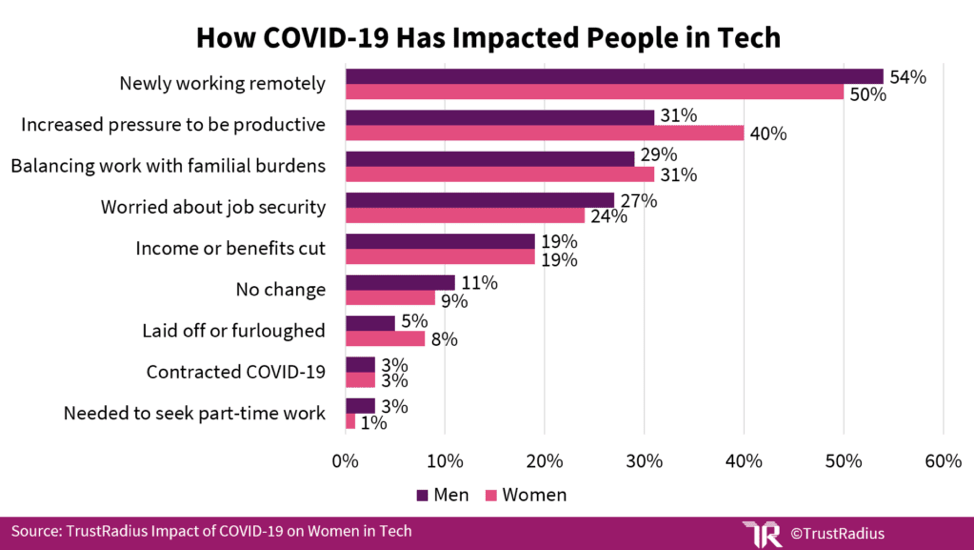
Data collected from 765 respondents between 4/24/20-5/1/20 by e-mail and social survey
Women in tech are 1.6 times as likely to be laid-off or furloughed as men. The United States has seen record unemployment due to COVID-19. The hardest-hit have been those in the travel, hospitality and service industries, given the face-to-face nature of their businesses. Tech companies have largely been able to transition to working from home to maintain jobs. That said, 8% of women and 5% of men surveyed reported being laid-off or furloughed. These 20 women and 15 men are a small part of the more than 25 million Americans who have lost their jobs as a result of the coronavirus pandemic. But the gender differences in our sample match findings by much broader studies that report higher rates of job loss among women.
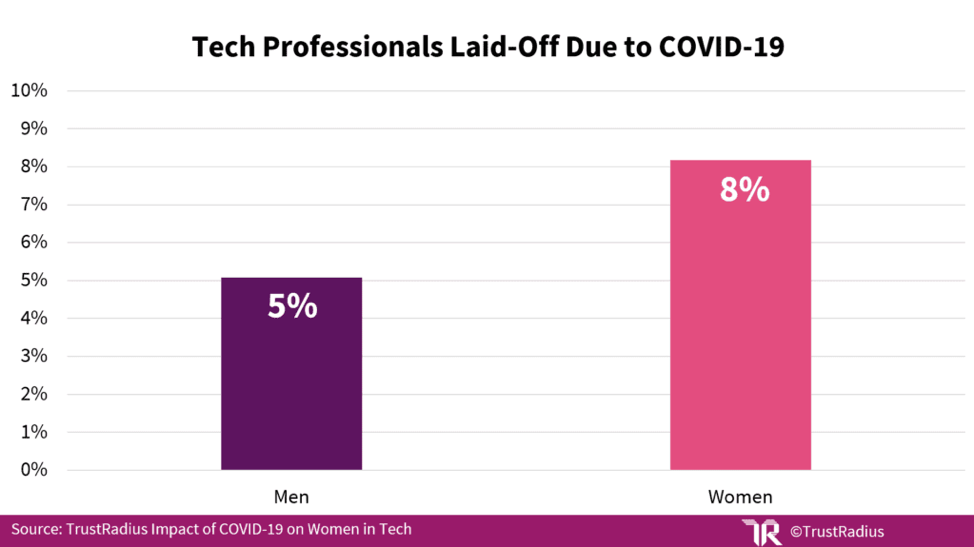
Women in tech are nearly 1.5 times as likely as men to report feeling a greater childcare burden due to COVID-19. According to local government data from New York City, men are twice as likely as women to die from COVID-19. However, women in tech may be feeling the brunt of COVID-19 social changes a bit more. Where COVID-19 hits women the hardest is in terms of how well they can manage both work and taking care of their children. Fifty-nine percent of women surveyed reported that they’ve seen their familial duties and responsibilities increase since COVID-19. What may be surprising, however, is that 18% more women are handling these increased responsibilities compared to men.
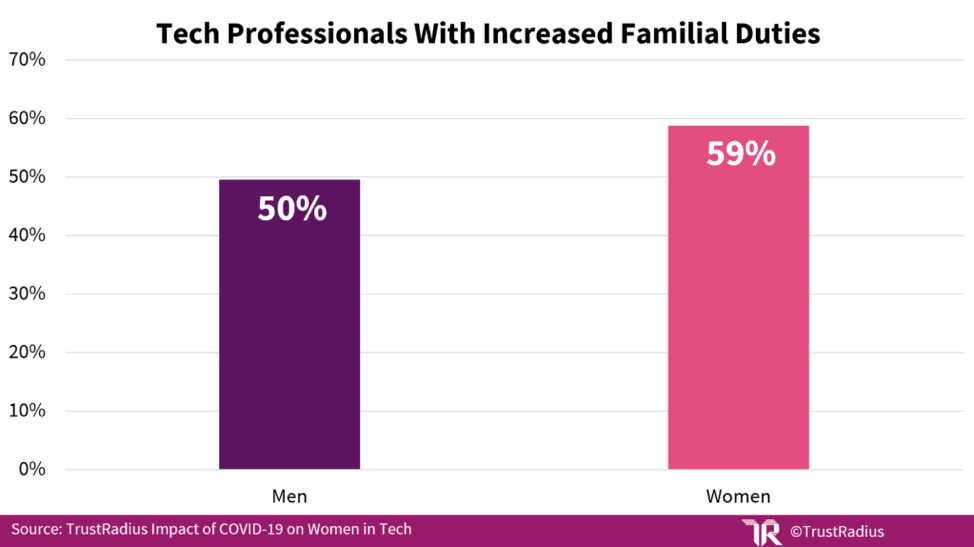
This burden is especially encumbering for single parents. Given social distancing, single parents can’t necessarily turn to outside help from daycare, camps, nannies, grandparents or other families at this time. Women are also more likely to be single parents than men. Of survey respondents who are parents or guardians, 88% have a partner. The remaining 12% are single parents or guardians. Of that 12%, 9% are women single parents compared to only 3% being men single parents.
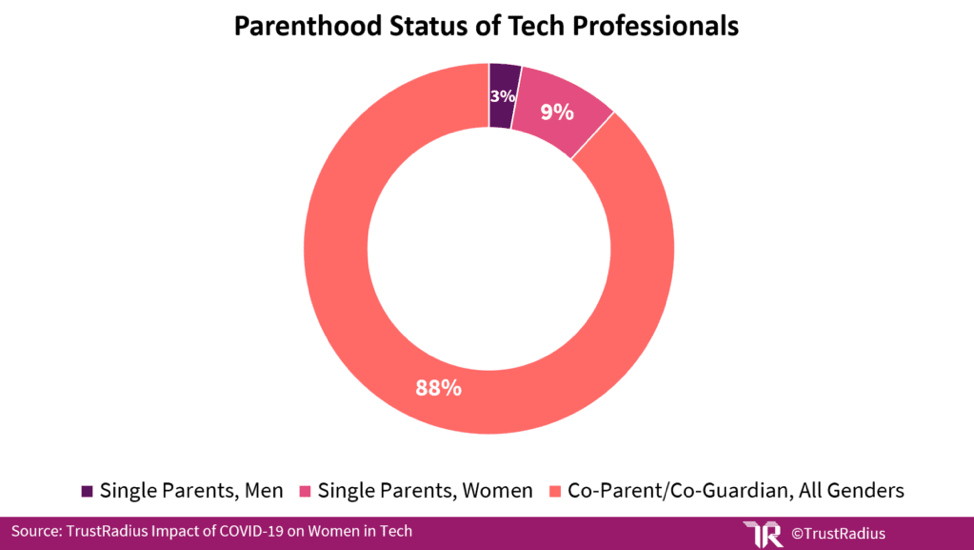
Data collected from 765 respondents between 4/24/20-5/1/20 by e-mail and social survey
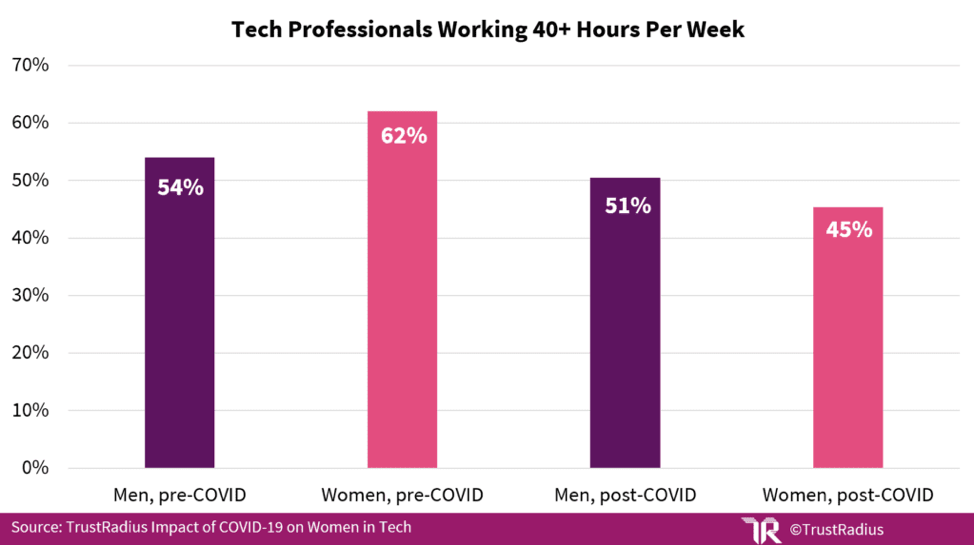
Forty-five percent of women feel like they’re expected to work more than 40 hours per week during COVID-19. Many companies are putting added pressure on their employees to be productive in times of economic uncertainty. Fifty-one percent of men, 45% of women, and one out of our five non-binary respondents reported that they feel like they’re expected to work more than 40 hours during the pandemic. Our initial Women in Tech report found that as of February 2020, women were 15% more likely than men to feel they’re expected to work more than 40 hours a week. The updated data shows that now, men are 13% more likely than women to feel pressured to work overtime. The pandemic is putting pressure on all tech professionals to keep up productivity, despite added stressors. 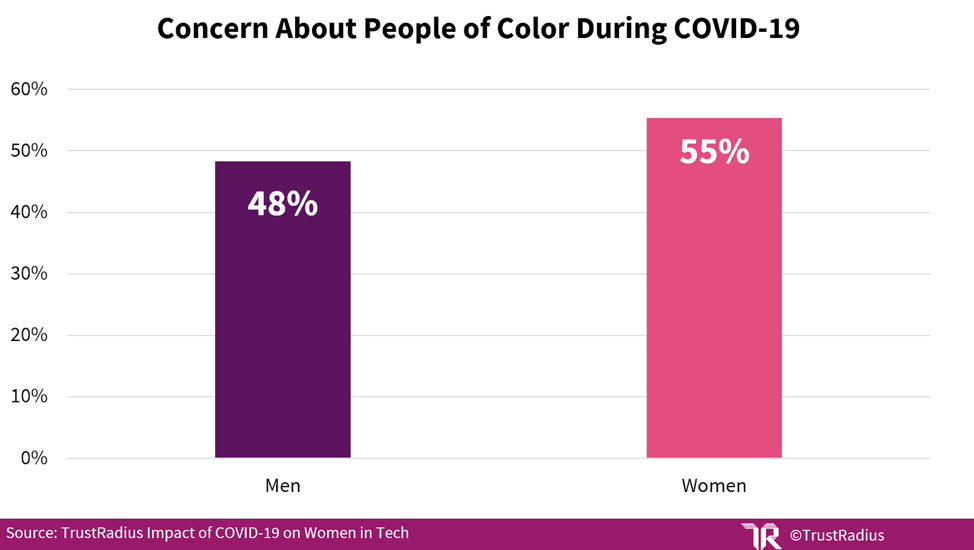
Women are 15% more likely to be concerned about COVID-19 health disparities than men. The New York Times recently addressed health disparities in COVID-19 infection and mortality rates in the United States, citing demographic data from local governments that indicate that Black and Latino Americans are affected at disproportionately higher rates. We surveyed our respondents to uncover how they feel about the impact these health disparities will have on their larger network. 55% of women and three of our five non-binary respondents reported that they were “very concerned” or “moderately concerned” about the impact of COVID-19 on at-risk communities in their network, compared to 48% of men. We saw an even greater gap in concern about COVID-19-related health disparities between the 181 people of color in tech we surveyed and their white peers. People of color in tech are nearly one-and-a-half times as likely to be concerned for at-risk groups.
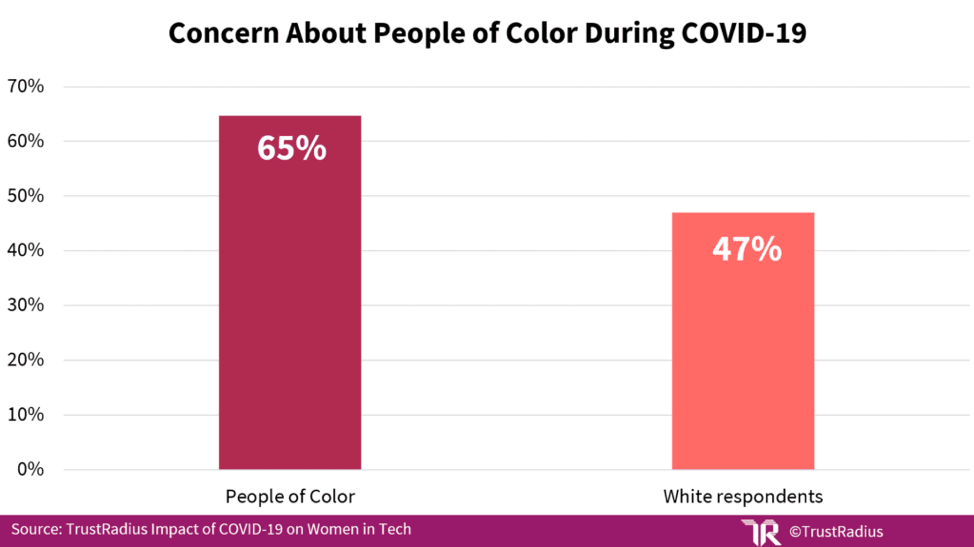 Positive about the future
Positive about the future
Despite the unique challenges in work and at home that COVID-19 has given rise to, the majority of women in tech feel positive about the future. They recognize the specific ways in which the pandemic is affecting them – work-life balance, mental health and financial worries, to name a few. At the same time, women are coming up with ideas on how to best tackle disparities. Some tech professionals even see opportunities for lasting change.
“I am blessed to work with some terrific leaders who happen to be women,” said one respondent. “I have watched them take this in stride despite the fact that they are now leading at work and at home with two or three school-aged children. They have adjusted by rearranging their work and that of their staffs to take advantage of those who could do more and demanding differently (not less) of those who are in similar roles. Strong leaders are strong leaders and figure things out and adapt. On the flip side, this pandemic has also exposed some weaker leaders who don’t have that trust with their staff and their teams are considerably less effective.”
Our research indicates that there is a need for systemic change in the tech industry to better support individual workers based on their unique circumstances and needs. Respondents suggest that there is great promise in this happening as more and more leaders take inspiration from those paving the way towards a healthy post-pandemic work culture.
Implications for researchers
What do this mean for end-client researchers working with tech fields? If you are doing user or market research and your subjects work in the tech industry, keep these findings in mind as you recruit respondents. Respondents may be less likely to respond or may have more limited availability. They may also be more motivated to participate by financial incentives. As you interact with subjects, be prepared for remote interviews or testing sessions to be interrupted by children. Remember that some demographic groups are under more stress than others, which may impact their responses.
